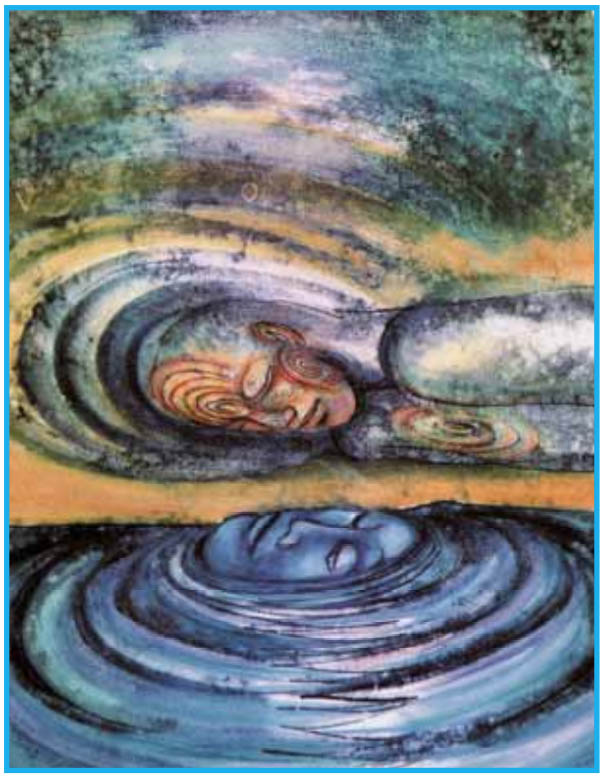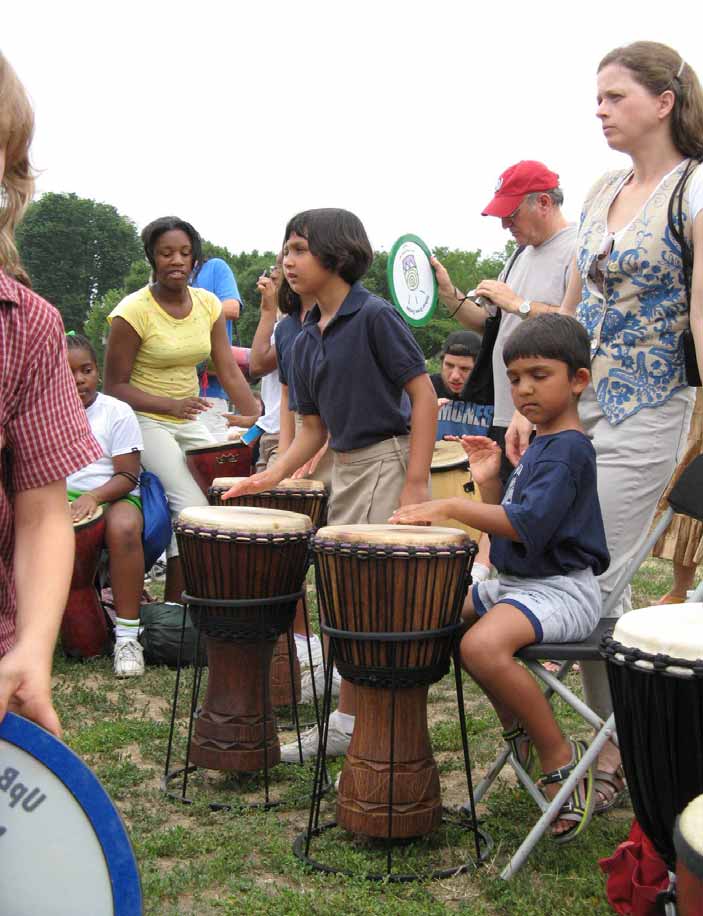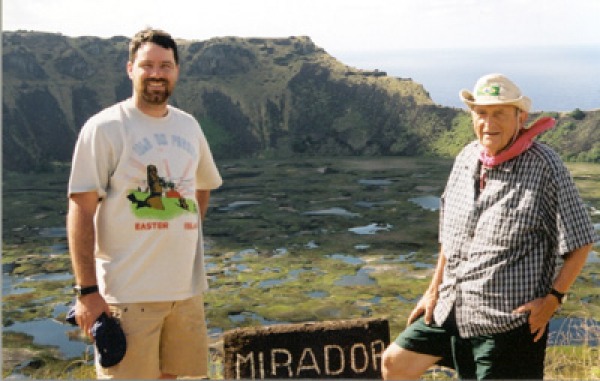
I get excited about dreams. I like to talk about dreams and explore dreams and dreamstates.
In those first early groups (of the 1980’s), I quickly discovered that people were hungry for information about their dreams. They usually came with the question ‘What does it mean?’, looking for a specific, concrete interpretation of their dreams. At the time, the concept that dreams were mysterious and needed an expert who could interpret them was still very strong. I wanted to share what I knew, but I didn’t want to be the ‘expert’ that ‘interpreted’ dreams – that approach too often takes the power of the dream away from the dreamer and I wanted to help people understand their dreams from the inside. What expertise I had came simply from being a bit further along the path, having a few more tools and resources, and the experience of working with my own dreams. I wanted to connect the heart and the whole body to dreams, as well as the head. And so, like many dreamworkers, I do not ‘interpret’ dreams. What I do is offer some tools, some techniques, some resources, maybe ask a few questions and make a few suggestions along the way – always mindful that an engaged dreamer is an active dreamer, and when a dreamer is actively engaged, the dream unfolds for the dreamer from the inside. The connection, the ‘ah ha’, is more deeply felt when it comes from within the dreamer. But you already know this.
I’ve had a number of dream groups since the '80s. I can’t help it – if there isn’t a dream group in my life, I’ll go looking for one and will put one together if necessary. I’ve been to a number of dream groups, classes, and workshops over the years, and have had lunch-time dream groups as well as weeknight and weekend groups. I still do dream workshops on occasion. My approach is very eclectic – if it works, I’ll use it!
These days, I am Organizer for a dream group on meetup.com (dreams.meetup.com/128). I learned about Meetup through Dream Network and took a look to see what Meetup was all about. A number of people were interested in a dream group but no one had stepped up as Organizer. It seemed pretty simple to set things up on Meetup, so I started the Austin Dreams Meetup group.
We’ve been meeting twice a month for over a year now! Until recently we were the only dream meetup group in Texas. Unlike past groups in which I was the ‘leader’, this group was set up intentionally as a ‘leaderless’ group with an open format. It’s ‘our’ group, rather than ‘my’ group. I see my role as more of a ‘facilitator’ — attending to group dynamics, following where the group leads, ensuring that everyone has an opportunity to participate, teaching specific dreamwork techniques as we explore dreams in a variety of ways, talking less, listening more, and bringing the conversation back to the dream topic or dream at hand if the conversation goes too far afield (while recognizing that digressions and side-trips do have a valuable place in the process of understanding dreams). I also pay attention to the time so we can wrap up the formal meeting and clear the room for any other group coming in. There are two Assistant Organizers who help with some of the practical matters of the group, and one of them wants to learn to facilitate. I’m excited to help him grow into that role.
In our group, we talk about dreams and end up in conversations about the nature of time, god, group dreams, and multiple realities (for example). We explore common themes like bathroom dreams, flying, or being naked. We play with numerous dreamwork techniques, including ‘draw a picture/ tell a story,’ variations on different ‘role playing’ techniques, and we frequently use the ever popular ‘if it were my dream’ technique. Several participants have shared other dreamwork techniques they have learned, and each person’s area of interest or expertise provide unique and often fascinating ways to look at a dream. We’ve also connected with another dreamworker in a nearby community and some members have done dreamwork with her as well. We get together often enough and consistently enough that the ‘core’ group (those who come most often), now has a ‘collective memory’ of dreams and can see how someone’s dreams change and evolve over time. It’s a wonderful feeling to be connected in this way, able to reference a dreamer’s past dreams as we help them explore a current dream. And although we do end the formal meeting on time, it is not unusual for folks to hang out after the meeting, continuing conversations or getting a bite to eat.
When I first began organizing dream groups, there were few models or guidelines for how to organize such a group or what to do as the group grew, bonded, evolved, and changed. Now, there are many, many more resources for people who are interested in putting together an on-going dream group. For example, the regional networkers and groups listed in Dream Network are a great resource if you have questions about dreams or dream groups. One of the nicest print resources I’ve encountered is Justina Lasley’s Honoring the Dream: A Handbook for Dream group Leaders (2005). This is the book I wish I had when I was starting out. It’s a wonderful resource for anyone who is interested in organizing a dream group. (Full disclosure: see my review in vol. 23 #4 /, vol. 24 #1 double issue). If you are interested in starting a dream group, here are some things to consider and plan for:
The reasons or overall purpose of the group. Your reasons/ purpose will also influence how you structure the group and meeting format. Will it be strictly discussion? Book reading? Active dream-sharing and dreamwork? Something else? You can always start with a favorite book and do the dreamwork exercises in that book, and modify the format/structure if necessary.
A place to meet – coffee houses can be a good option, especially if there is a room that can be reserved. Public libraries typically have rooms for public meetings and groups. Organizations or businesses may also offer rooms for group meetings (some may charge a fee). If you want to meet at your home, consider having the first few meetings in a public place to get to know each other first.
Guidelines that give participants a clear sense of what is and is not acceptable in the context of the group and help create a ‘safe space’ and ‘container’ for the group. ‘What’s shared in the group stays within the group’ is one of the most common guidelines. Participants are typically free to talk about their own experiences outside the dream group and are expected to respect the privacy of others in the group. Lasley’s book has some excellent suggestion for guidelines. In our group, participants speak from their own experiences and associations (‘I’ statements) and generally use the ‘if it were my dream’ technique as the primary tool when offering feedback to a dreamer. It takes a little practice getting used to using ‘I’ statements (and particularly catching ‘you’ statements disguised as ‘I’ statements), but it’s worth the effort and will go a long way toward helping the dreamer stay authentically connected to the dream’s wisdom while feeling safe enough to explore further. Remember, the dreamers are always the final authority on what their dreams are saying to them.
Open or closed? Can people come and go randomly, with new people showing up as they hear about the group? Can they come once or twice or do they need to commit to a particular number of meetings? Will the group have a specific size and/or time frame during which new people can or cannot join? Closed groups sometimes choose to ‘open’ for different reasons — perhaps after a set number of weeks/months, or if the group becomes too small over time.
Advertising: Get the word out — put up fliers around town at places you enjoy visiting, especially bookstores and local shops with clientele who may be more likely to be interested in dreams. Place ads in the local free paper, on Craigslist, etc. Become a dream group organizer on meetup.com or one of the other on-line networking services. Include day, time, location, and contact info on the flier or ad.
Expect a good turnout and be prepared that it may take some time for a ‘regular’ group to form. It took about three months before our meetup group had more than one or two people on a regular basis. Sometimes it would be me and just one other person – and not always the same person. Sometimes it would be just me. But I made the commitment to be there and even if no one else showed up, that time was not wasted – I’d work with my own dreams, read the current issue of Dream Network, or catch up on one or the many dream books calling my name.
Keep working with your own dreams. Take dream workshop and classes. Talk to other people about dreams and dreaming! Enjoy!
I hope you are as excited about dreams as I am. And I hope that we’ll have more and more dream groups and people talking about dreams and sharing dreams and making dream conversations a regular part of every day life. ℘
Victoria A. Vlach has been a dreamer all her life. In addition to facilitating dream groups and workshops, she is a Regional Contact and an occasional writer and proofreader for Dream Network.














